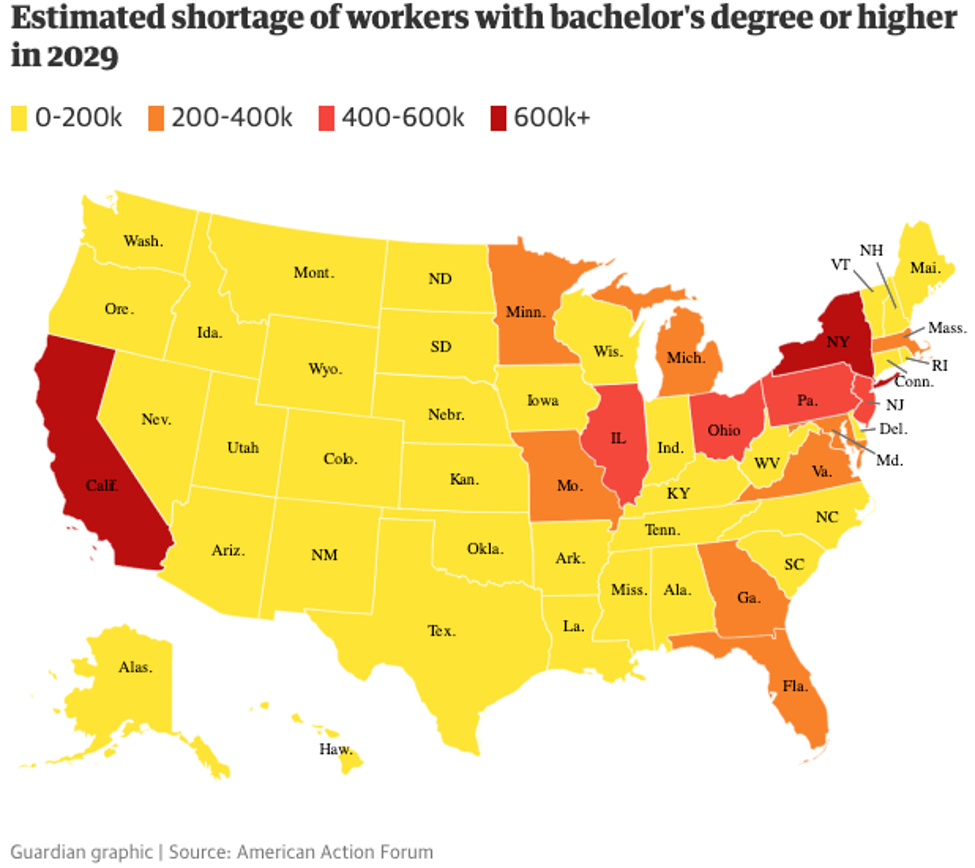We’ll give you the good news first. Recent reports show that despite some uncertainty, the U.S. construction market remains optimistic, with project backlogs and new building starts abundant.
The Bad News
The building industry at large continues to suffer from a labor shortage that’s hampering companies’ ability to satisfy that backlog. Not only is there a shortage of skilled laborers like electricians, plumbers, welders, and engineers, but veteran sales reps have also begun to disappear. The sales rep shortage extends beyond builders to the manufacturers responsible for making and selling building products.
An aging population has meant more outgoing salespeople than incoming ones in recent years. When a long-time rep retires, they leave with a wealth of industry knowledge that can take years to replace. By 2025 millennials will make up 75 percent of the global workforce, and younger generations generally don’t look at manufacturing as an attractive career option. It’s a troubling 1-2 punch for hiring managers.
Many building products manufacturers we talk to report a deeper problem: even if they do manage to land some savvy millennial sales reps, they have to invest serious time getting them up to speed on industry dynamics and pricing strategies. Given the recent brain drain, a ride-along, mentorship approach isn’t scalable for most companies.

A crucial part of the ramp-up for new sales reps is learning how to price in different situations, to diverse customers and for up to thousands of products. If you don’t provide them the tools and guidance they need, invariably they will just guess on price. That’s a disaster outcome. Overpricing leads to lost volume, underpricing hurts your bottom line and the inevitable increase in spot prices will destroy any pricing strategy you try to execute.
If any of this sounds familiar, don’t panic. There are some actions you can take now to harness the power of data to mitigate the pains of a shallow sales talent pool. You need less data than you think to make an impact, and you have more usable data than you realize. We find this to be the case again and again with our manufacturing customers.
We recommend you start by looking at your cleanest data source, which for many companies is order history and other transaction data. Prioritize a problematic region, specific product category or customer type. Once these are selected, a thorough diagnostic of the data set will reveal where your prices are inconsistent and/or out of step with the market. Our annual benchmark reports have shown that manufacturers fail to capture up to 6.6 percent margin because of variance in pricing practices and up to 8 percent due to misaligned market pricing.
Pricing and Deal Management Software Closes the Gap
With an idea of the opportunity gap that exists in your business, you can begin to make prescriptive changes leveraging price management, deal management and data science. Equipped with the facts about your customers, products and historical prices, you can accomplish the following:
Rational list prices: Align costs, product value relationships and competitor prices to build a solid foundation for your downstream pricing architecture. Profitable price matrix that actually gets used: Assign all customers to the correct category, meaning prices are in step with the market and have a rational relationship to list price. Give sales reps of any experience level confidence when quoting a matrix price. Streamline customer-specific pricing agreements: Provide reps with a deal envelope and guidance to move the exception price upward, as part of a reimagined deal management process. Establish an approval process to make the negotiation and execution of agreements more efficient and eliminate unnecessary exceptions. Reduce overrides and, when they are necessary, stop over-discounting.
Bottom Line
In this environment, you must turn your transaction, customer and product data into an asset that significantly reduces the learning curve for new and inexperienced sales reps.
